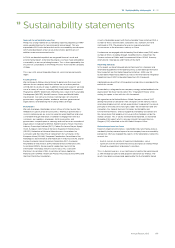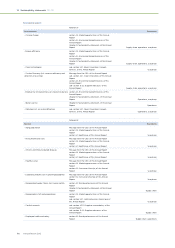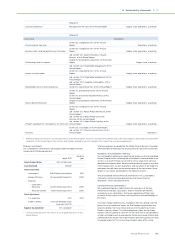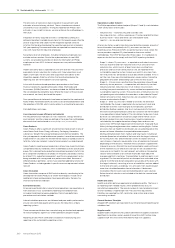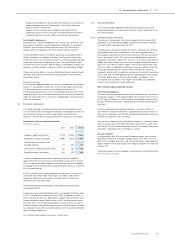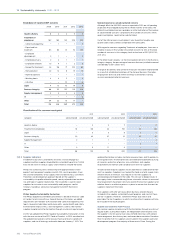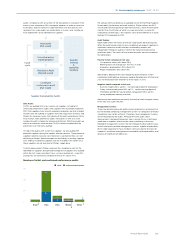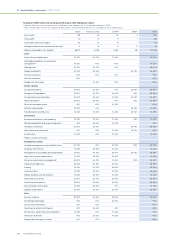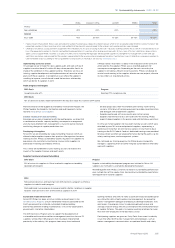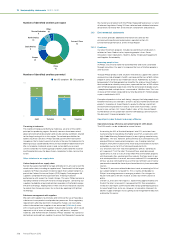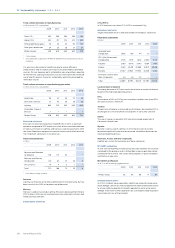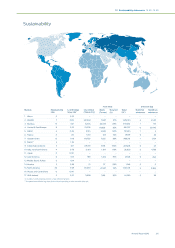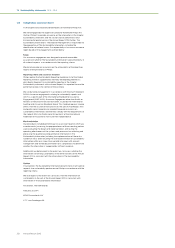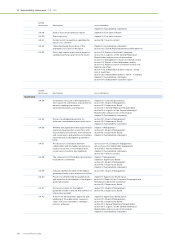Philips 2013 Annual Report Download - page 207
Download and view the complete annual report
Please find page 207 of the 2013 Philips annual report below. You can navigate through the pages in the report by either clicking on the pages listed below, or by using the keyword search tool below to find specific information within the annual report.
13 Sustainability statements 13.2.2 - 13.2.2
Annual Report 2013 207
Template we requested our suppliers to report back their progress and to
disclose which smelters are used in their supply chains to produce the
metals.
Philips conflict minerals policy and strategy
Awareness raising and training suppliers
Suppliers adopt conflict-free policy
Suppliers investigate supply chain
Report back to Philips on progress and
disclose smelter names
Compile and publish Philips smelter list
Assess and mitigate sourcing risks
Report publicly about process and results
Step 1:
Step 2:
Step 3:
Step 4:
Step 5:
Step 6:
Step 7:
Step 8:
Progress on smelter identification
Philips suppliers have provided the names of several hundred possible
smelters and we are working to confirm which of these actually are
smelters. For all four metals together we now identified 191 confirmed
smelters in our supply chain, of which the majority is located in Asia. 29%
of these successfully passed their Conflict Free Smelter (CFS) assessment,
thereby confirming their conflict-free status. None of the smelters
identified in our supply chain is known to source minerals that benefit
armed groups in the DRC, and our suppliers reported back that they
provide us with conflict-free products. Nevertheless, we continue to urge
smelters to confirm their status via independent third party assessments.
Philips was the first company to publish its smelter list on internet in 2012.
In doing so we created transparency at deeper levels in our supply chain of
those actors that we believe hold the key towards eectively addressing
the concerns around conflict minerals. In 2013 we updated the smelter list
with new information received from our suppliers, and we will continue to
do so as more information becomes available over time.
Conflict-free smelter program
Smelters mix minerals from many sources and refine it into metal used in
our industry. The smelter is at a key point in the supply chain to enforce
responsible sourcing by implementing due diligence in selecting their
mineral sources. The EICC-GeSI CFS program makes it possible to identify
smelters that can demonstrate through an independent third party
assessment that the minerals they procure did not originate from sources
that contribute to conflict in the DRC. After having identified smelters in our
supply chain, Philips started to invite these smelters to participate in the
CFS program.
A list of CFS compliant smelters for tin, tantalum and gold has been
published, and assessments for tungsten smelters are under way. As
sufficient conflict-free smelters for all four metals become available,
Philips plans to direct its supply chain towards these smelters. See
www.conflictfreesmelter.org for more details.
Conflict Free Tin Initiative
In September 2012, the Conflict Free Tin Initiative was launched,
introducing a tightly controlled conflict-free supply chain for tin, from a
mine in the Democratic Republic of Congo (DRC) all the way to an end-
product. Philips is one of the industry partners brought together by the
Dutch government that initiated this conflict-free sourcing program in
eastern DRC. In an eort to prevent minerals from financing war, many
companies worldwide have refrained from purchasing minerals from the
DRC, leading to a de facto embargo and a collapse of the local economy.
The easiest route would have been to simply abandon sources from the
DRC and nearby countries (forbidding suppliers from sourcing there) and
to rely instead on supplies from conflict-free regions. However, we
decided against that approach. Instead of avoiding the DRC, we took the
more difficult road, supporting conflict-free sources within the region.
Conflict minerals
2013 Goals Progress
Awareness raising and capability building with buyers and suppliers
Conflict minerals is now a standard part of the Philips procurement core
curriculum
Organized webinars for buyers and suppliers, attended by about 120
participants and installed a helpdesk (English and Chinese) to support suppliers
in collecting the requested information
Priority suppliers to adopt a conflict-free sourcing policy 71% of the priority suppliers did
Priority suppliers to investigate supply chain and report back on progress and
results
94% of the priority suppliers completed the standard Conflict Minerals
Reporting Template. 69% disclosed smelters identified in their supply chain
Conflict Free Tin Initiative: include DRC tin in end-user product In Q4 the first products were made using this DRC conflict-free tin
2014 Goals
Publish a Philips Conflict Minerals Report validated by external auditors
Collect Conflict Minerals Reporting Templates from at least 80% of priority
suppliers, applying stricter criteria on data quality and completeness
Conflict Free Tin Initiative: include DRC tin in mainstream solder supply (move from
pilot to normal business)
For more details, see www.philips.com/suppliers and the published
Philips position paper on Conflict Minerals.


